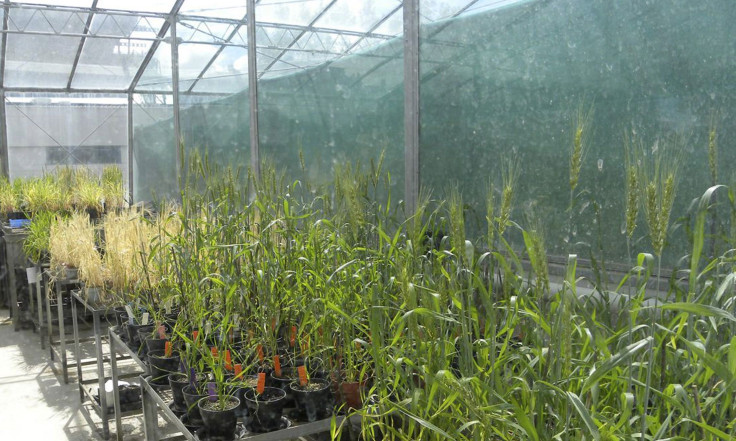Scientists Unlock A Key To How Increasing Levels Of Carbon Dioxide Affect Food Crops

A team of U.S. scientists has discovered how carbon dioxide limits the ability of plants to deal with heat and drought. The discovery, reported in this week’s early online edition of the journal Nature, is boosting hopes that researchers may be able to engineer plants to withstand higher temperatures and lower rainfall.
The scientists, from the University of California, San Diego, and the University of Missouri, said they discovered a genetic pathway in plants that controls the thickness of breathing pores, also known as “stomata,” which are found in plant leaves.
“For each carbon dioxide molecule that is incorporated into plants through photosynthesis, plants lose about 200 hundred molecules of water through their stomata,” Julian Schroeder, a professor of biology at the University California, San Diego, said in statement. “Because elevated CO2 reduces the density of stomatal pores in leaves, this is, at first sight beneficial for plants as they would lose less water.”
However, the scientists also said that less breathing pores could decrease the ability of plants to cool their leaves via water evaporation, which could lead to heat stress in plants, ultimately affecting crop yield. The genetic pathway, which the scientists discovered, is made up of four genes that manage the density of stomata, scientists said.
As part of the study, the scientists examined a tiny mustard plant, called Arabidopsis, which is used as a genetic model as it shares many of the same genes as other plants and crops. The scientists found that the proteins encoded by the four genes they discovered suppress the development of stomata at elevated CO2 levels.
According to scientists, the of these proteins and genes could help them address critical agricultural problems in the future, including limited availability of water for crops and various concerns among farmers about the impact of heat stress on their crops as global temperatures and CO2 levels continue to increase in the atmosphere.
“At a time where the pressing issues of climate change and inherent agronomic consequences which are mediated by the continuing atmospheric CO2 rise are palpable, these advances could become of interest to crop biologists and climate change modelers,” Cawas Engineer, a postdoctoral scientist in Schroeder’s lab and the study’s first author, said in the statement.
© Copyright IBTimes 2025. All rights reserved.






















